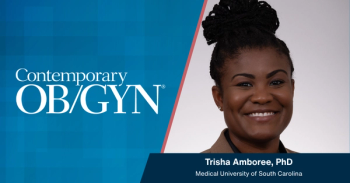
Dietary Recommendations for Endometriosis
Diet can’t cure endometriosis, but dietary recommendations could be part of the treatment. Find out here why choosing certain foods may help reduce symptoms.
Endometriosis is the presence of endometrial glands and stroma outside the uterus. Common implantation sites are the pelvic viscera and peritoneum. The symptoms of endometriosis include infertility, pelvic or abdominal pain, dysmenorrhea, hypermenorrhea, dyspareunia, bloating, and cramping. Not all women with endometriosis experience symptoms, but for those who do, it can be quite a debilitating disorder that results in reduced quality of life.
Endometriosis has a prevalence of up to 10% of the general female population. The disorder can affect any woman of reproductive age and is diagnosed most often in women in their 30s and 40s.1 While the definitive diagnosis is by histological confirmation of endometriotic lesions, usually obtained by laparoscopy, endometriosis can also be managed clinically as a diagnosis of exclusion.
Treatment options range from controlling pain (eg, NSAIDs) and/or the hormone cycle (eg, contraceptives) to ovarian suppression (eg, GnRH agonists) to surgical obliteration of lesions. There also are dietary recommendations that may help in the management of endometriosis.
What’s Diet Got to Do With It?
There are many working theories to explain the histogenesis of endometriosis. Although retrograde menstruation appears to be a common event in women with endometriosis, not all women who have retrograde menstruation develop this disorder. It has been hypothesized that the disease may develop as a result of reduced immunologic clearance of viable endometrial cells from the pelvic cavity.2 Endometriosis can be caused by decreased clearance of peritoneal fluid endometrial cells resulting from reduced natural killer cell activity. Decreased cell-mediated cytotoxicity toward autologous endometrial cells is associated with endometriosis.
Based on this theory, women exposed to polychlorinated biphenyls (PCBs) may have a higher prevalence of endometriosis.3 These “organochlorines” are known to impair the immune system which, in turn, can compromise a woman’s ability to clear random endometrial glands present in the pelvis. Since PCBs are found in high concentration in fatty foods, including but not limited to red meat, fatty fishes, and certain dairy, it is advisable that women with endometriosis limit/eliminate such food from their diet.
While we may not know the absolute cause for endometriosis, we do know that estrogen is the fuel that keeps it active. Therefore, any estrogen-enhancing compounds can potentially exacerbate endometriosis. PCBs can also mimic estrogen, which is all the more reason to avoid foods rich in it. Furthermore, women with endometriosis should follow a diet that improves liver function (which could help with the metabolism of estradiol), boosts immune function, and maintains healthy bowel function.
Dietary Recommendations
While there is no cure for endometriosis, dietary modification is a natural, simple, healthy, and inexpensive alternative that may help women cope with this disorder, especially if they are seeking pregnancy and/or have failed other treatments. Ronald Burmeister, MD, in Rockford, Illinois, has reported the diminution of pain and symptoms in several women with endometriosis by following a vegetarian and low-fat diet.4
The dietary recommendations for patients with endometriosis aim to reduce or eliminate exposure to PCBs, boost the immune system, counteract secondary anemia, and help eliminate toxins and hormone byproducts (Table).
There are ongoing studies seeking better treatment options for women with endometriosis, such as at the
Endometriosis is a terrible burden for women during their reproductive years. In fact, nearly half of all women seeking help for infertility have endometriosis. Therefore, it behooves us to discuss with our patients dietary guidelines that can potentially ameliorate this disorder.
References:
1. American College of Obstetricians and Gynecologists. FAQ: Endometriosis. Available at:
2. Dmowski WP. Immunological aspects of endometriosis. Int J Gynaecol Obstet. 1995;50(suppl 1):S3-10.
3. Louis GM, Weiner JM, Whitcomb BW, et al. Environmental PCB exposure and risk of endometriosis. Hum Reprod. 2005;20:279-285.
4. Physicians Committee for Responsible Medicine. Endometriosis. October 8, 2012. Available at:
RESOURCE:
D’Hooghe TM. Endometriosis. Chpt 17. In: Berek JS, ed. Berek and Novak’s Gynecology. 15th ed. Lippincott Williams & Wilkins; Baltimore; 2011:chpt 17.
Newsletter
Get the latest clinical updates, case studies, and expert commentary in obstetric and gynecologic care. Sign up now to stay informed.




















